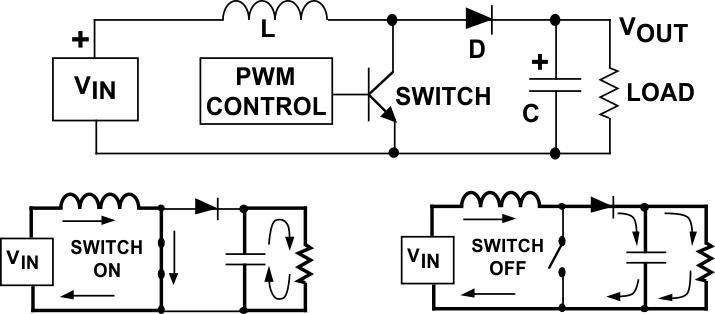SNVA559C September 2012 – February 2019 LM2574 , LM2575-N , LM2575HV , LM2576 , LM2576HV , LM2577
-
Switching regulator fundamentals
- Trademarks
- 1 Switching Fundamentals
- 2 Switching Converter Topologies
- 3 Application Hints for Switching Regulators
- 4 Application Circuits
- 5 References and Related Products
- Revision History
2.3 Boost Regulator
The Boost regulator takes a DC input voltage and produces a DC output voltage that is higher in value than the input (but of the same polarity). The boost regulator is shown in Figure 7, along with details showing the path of current flow during the switch ON and OFF time.
 Figure 7. Boost Regulator
Figure 7. Boost Regulator Whenever the switch is on, the input voltage is forced across the inductor which causes the current through it to increase (ramp up).
When the switch is off, the decreasing inductor current forces the switch end of the inductor to swing positive. This forward biases the diode, allowing the capacitor to charge up to a voltage that is higher than the input voltage.
During steady-state operation, the inductor current flows into both the output capacitor and the load during the switch OFF time. When the switch is on, the load current is supplied only by the capacitor.